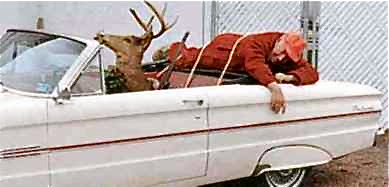The frigid arctic start, combined with a late corn harvest, kept many hunters at home. Those factors, combined with a smaller deer herd statewide, resulted in fewer deer being killed, according to state wildlife officials.
“The number of license buyers decreased by 6.6 percent compared to last year, and the number of kill tags sold decreased by 10.6 percent,” said Brent Rudolph, the DNR’s former deer program manager. “Our general observations are that the deer kill is down this year compared to last.”
Preliminary estimates indicate the U.P. firearm kill was down 30 to 40 percent from 2013. Some areas had bigger declines, Rudolph said. The southern Michigan deer harvest was down about 5 percent, and the northern Lower Peninsula harvest was down by as much as 10 percent, Rudolph said.
“The late corn harvest provided a lot of extra refuge for deer. … Statewide, only 43 percent had been picked by the week before opener, compared to an average of 63 percent. By the end of the season, it was only 77 percent (picked).”
Barry State Game Area manager Sara Schaefer called the 2014 firearm season “the worst in the 15 years.”
Schaefer said, “People weren’t used to hunting in that kind of weather. They spent fewer hours hunting, and some didn’t go out at all.”
State wildlife officials develop their preliminary assessments using a combination of factors: the number of vehicles parked at hunting areas, the number of deer brought to check stations and conversations with deer processors and conservation officers.
Those who did stop brought in bucks that were bigger than usual. Antler point restrictions (APRs) were implemented in northwest Michigan counties two years ago.
They require hunters to shoot older deer and prohibit shooting younger ones.
APRs are controversial. Some hunters want to shoot any buck. Others believe restraint helps create an older, healthier deer herd.
“Last year, the harvest was on the low side because hunters couldn’t take 1.5-year-old bucks,” Keen said. “This year, we are seeing more 2.5-year and 3.5-year bucks and a few 4.5-year-old bucks due to that change. The deer were healthy. We aren’t seeing unusually small beam diameters (because of the effects of a cold winter last year). They are typical of deer that age.”
From an article by Howard Meyerson on The Outdoor Journal at howardmeyerson.com

